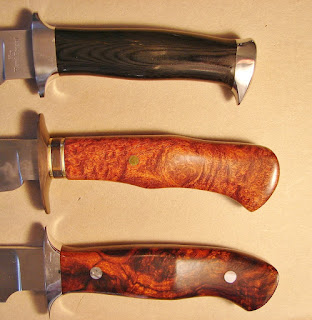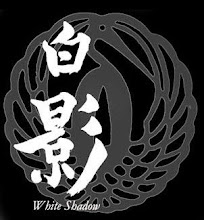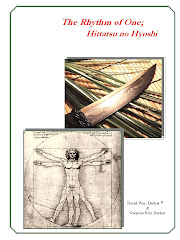The posting of my WW-II X-dagger on our Fairbairn website
raised all sorts of interest, both positive and negative. These knives have
been declared complete fakes by some and home-made knives by others. Those of
the opposing viewpoint consider them the prototypes of all commando knives. So
let’s look at why the furor. http://www.fairbairnsykesfightingknives.com/rarest-of-them-all.html Shown below is a Shanghai Dagger.

Story line one: W.E. Fairbairn and E.A. Sykes approached
Wilkinson Sword Co. and asked them to produce a specialized fighting knife.
This knife was to be based on a model they brought with them. That model was/is
called the Shanghai dagger. There are some who say the Shanghai knife was designed
by, or in conjunction with, an American Marine named Samuel Yeaton. Anyway,
these knives were made in the Shanghai Municipal Police Armoury about 1939. By
the way, so far, all of this information is readily available from numerous reliable
sources. Model 1888 Lee-Metford bayonets were converted into these roughly five
inch bladed daggers. According to W.E. Fairbairn’s son, you could get two of
the daggers out of one blade. The handles were coke bottle shaped and made of
various materials including Ivory, hardwoods, and brass. They were either
checkered or knurled depending, on the material. The guards were made from
pieces of aluminum left over from making bullet-proof vests. Our X-Dagger shown below, made from an 1888 Lee-Metford bayonet.

Story line two: W.E. Fairbairn takes a number of these same
bayonets to Wilkinson (or another armoury depending on the source of your
information) and asks them to build them into fighting knives, using the
shanghai dagger as an example of the conversion process. A lot of unwanted
changes are made in the final design but after experimentation with the
bayonets production begins with the introduction of the Wilkinson Sword Co. First
Pattern, Fairbairn Sykes, Fighting Knife. There are some who insist this whole
story is fabricated, that the knives (Shanghai or X-daggers) never existed, and
any that do exist are counterfeits. They are adamant about this while having no
proof. The whole story becomes one of opinions. I want to discuss as rationally
as possible both sides of the story. While the detractors have no definitive
proof that legitimate X-daggers did not exist, I have an X-dagger. Shown below is a Wilkinson First Pattern knife.

They say the reasons why X-daggers do not and cannot exist
are abundantly clear:
·
X-daggers cannot be made from model 1888 bayonets
·
There are rivet holes where the tang needs to be
·
It is too labor intensive to remove the guard etc.
·
It would be quicker to forge and grind new blades
·
There is no documentation to support the Fairbairn story
·
All known x-daggers have come from North America
I want to tackle these excuses one at a time. X-daggers, unlike unicorns, do exist. Whether
they are legitimate WW-II knives or not is another argument. They do exist and
they are made from Lee-Metford bayonets. This simple, incontrovertible fact,
discredits many of the explanations of why they cannot exist. How do I know
what bayonets they used? It is documented in several books and more concretely
by the actual markings stamped into the ricasso of the blades. In my emails to
more than one collector I have explained how they can be created. It is a
simple process really, one that has been used for centuries. Let’s look at the
process.

If you take and chop the bayonet tang off in the vicinity of
the first rivet hole you eliminate a lot of time consumed in disassembling the bayonet.
Just cut it right off and discard the handles and baggage for attaching a
bayonnet to a rifle. To convert the blade’s remaining tang to accept a First
Pattern style handle you must attach what is called a “rat-tail” or “stick”
tang. Simply splitting the remaining original tang and then any blacksmith or
cutler could braze, silver solder, or weld a new tang to the stub left from
cutting off the handle. Wow that takes care of the major obstacle already. In
the process of heating it for the installation of the new tang the guard could
be knocked off.
Backing up, let me ask you. How did they make two Shanghai
daggers out of one bayonet blade? Did that question enter your mind? One half
of the bayonet blade would have no tang at all. The other half would have no
point and a tang with rivet holes. The
only solution is something like I have outlined or to call Samuel Yeaton, W.E.
Fairbairn and his son liars. Basically that is what some experts are implying. Am
I denying there may be counterfeits in the market? No I am not, but to declare
all examples as fakes is to miss an opportunity to explore possibilities.
One person asked me how could an X-dagger have a First
Pattern handle if it was supposed to be made before the First Pattern
knives? Think about it. One of Fairbairn’s Shanghai daggers had a knurled brass
coke bottle shaped handle. It was one of those knives made in 1939-40. When you
allow your opinions to be sublimated to some objective thinking you could see where the
First Pattern knives may have instead been fitted with X-dagger style handles.
Huh? Hadn’t thought of it that way had you?
All of the X-daggers come from North America, according to
one train of thought. The fact that my knife came from an attic in England was instantly
dismissed by one noted author because “The person who sold you this knife was
by your account 100% legit, but that does not help nail down the history of the
knife. The fact that it came out of the
UK does not in itself help as we do not know where it came from in the first
place..” So why not call this person a liar too? There is no way to argue with
this reasoning. If I had a document signed by the original owner stating when
and where he acquired it, how could I prove that it was true? I think at some
point you have to follow your own instincts and tell the experts to kiss off.
kvt!lEBOsv1d4ryg~~60_3.jpg)

























+of+Rod+and+Instructors.jpg)
+of+concrete+rangeA.jpg)
























